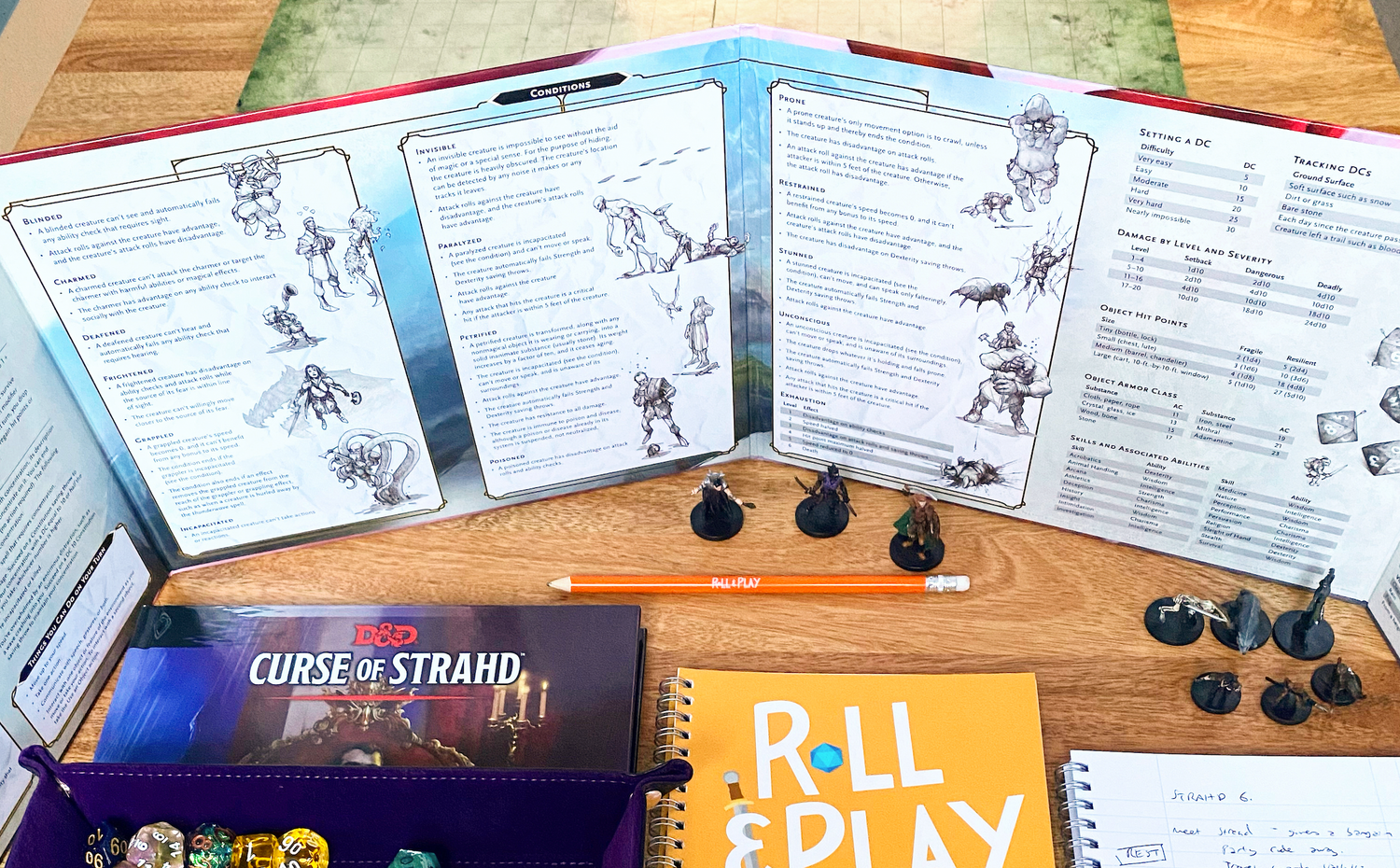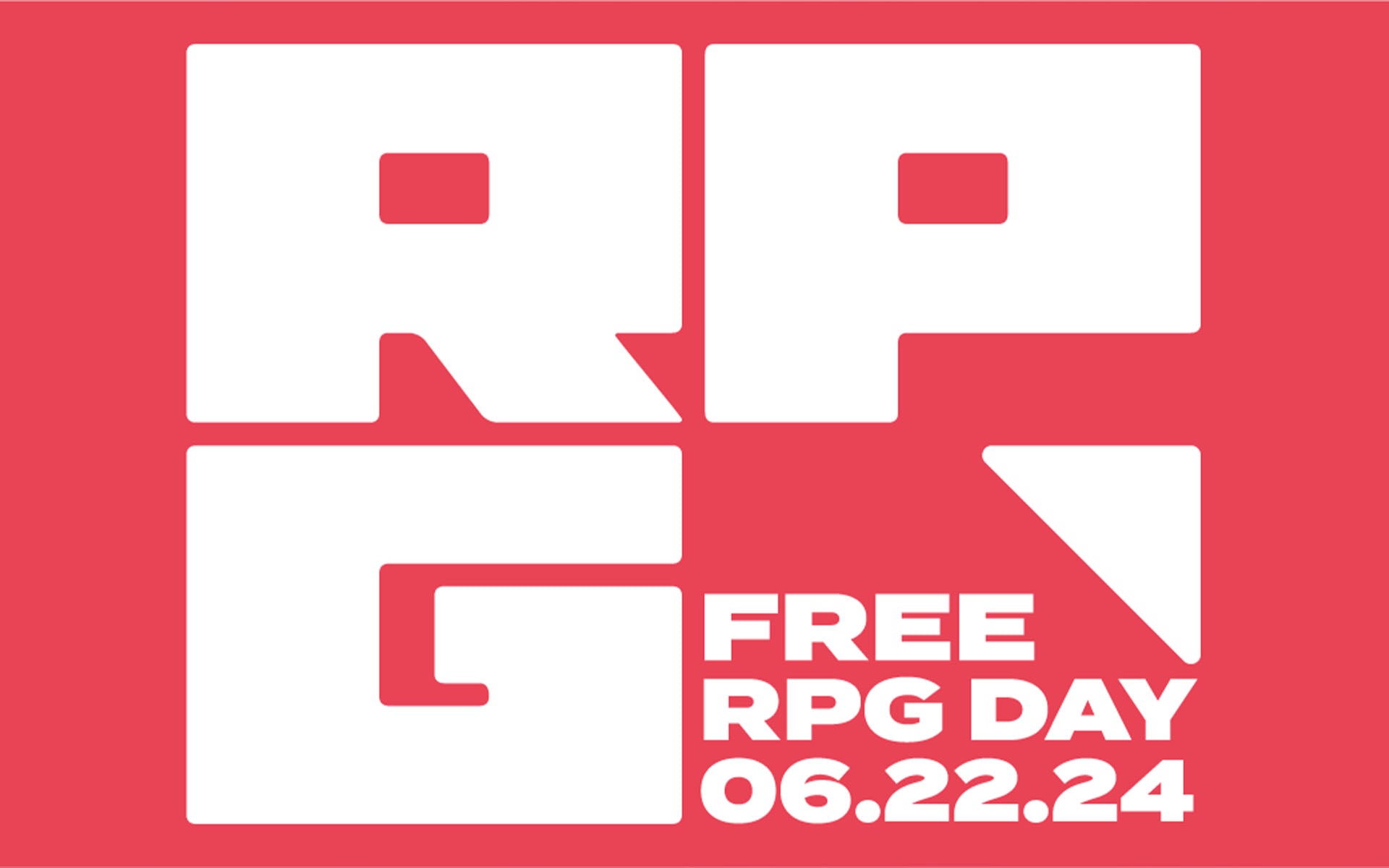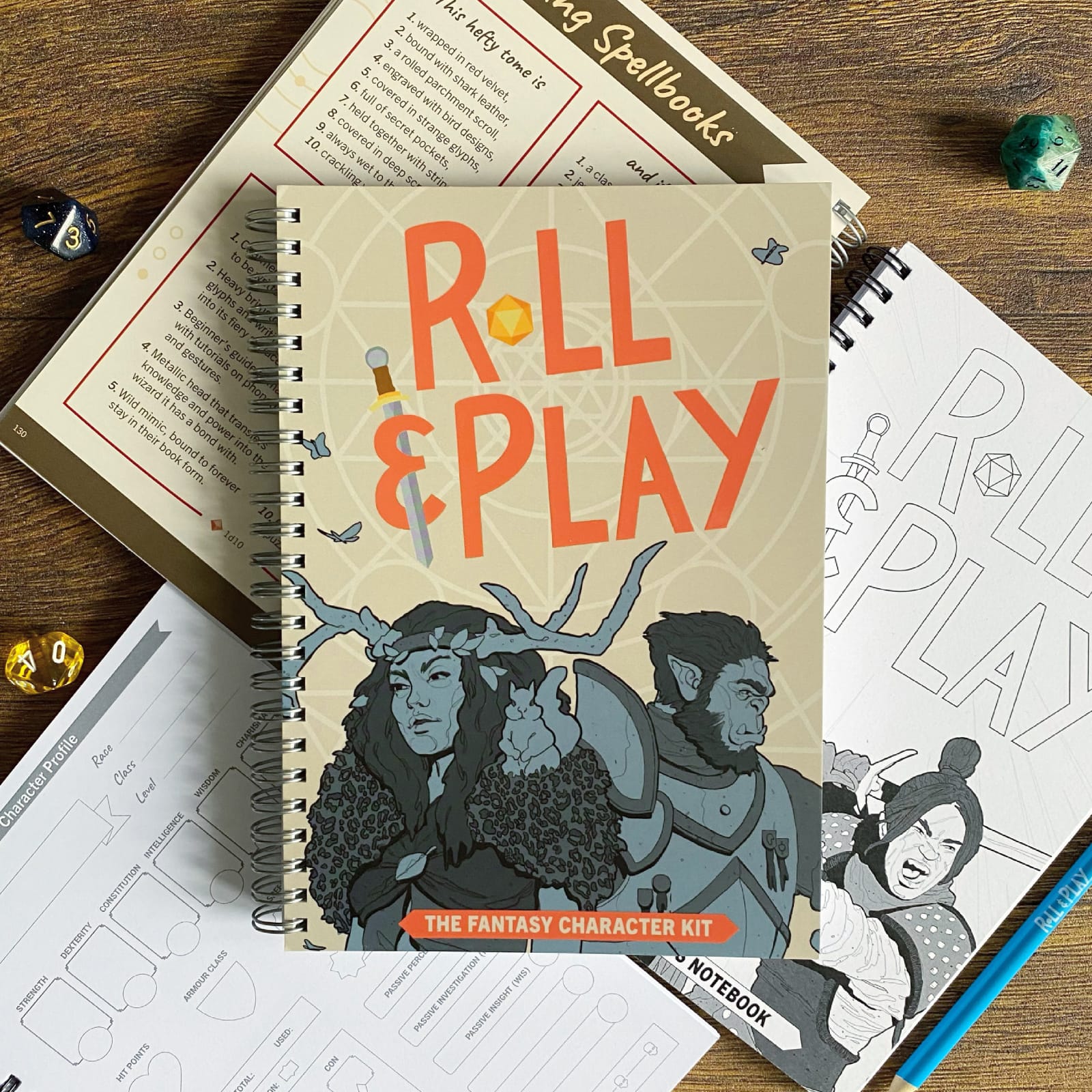We meet a lot of people who want to play Dungeons & Dragons for the first time, or want to know how to become a Dungeon Master. We’re here to help you take the leap and make running your first game as easy as possible.
Playing RPGs is one of the most enjoyable, creative and social hobbies you can do. And, as a Game Master, you get to choose exactly what adventures you go on, worlds you want to explore, and stories you want to tell. However, being a beginner GM can also be nerve-wracking if you’re not sure where to start.
Luckily, if you want to start playing D&D, you’re in the right place. We make must-have tools for Dungeon Masters. All are suitable for beginner DMs, and even Forbes call our books “super helpful”. It’s all part of our quest to make RPGs easier!

What do I need to be a DM?
To answer that common question, we’ve created a Game Master’s Starter Pack, which comes with some essentials for new DMs:
- A free 5E one-shot adventure called ‘Wave of Destruction’
- Digital battle map
- Four pre-generated Level 1 character sheet PDFs
- Quick-start guide to key D&D rules.
We’ve also put together our top tips for running the session, so you have everything you need to run your first Dungeons & Dragons game.
So, download this free D&D adventure, then read our step-by-step advice to prepare for your first session as a DM.
Step 1: Start with the story
‘Wave of Destruction’ is a self-contained adventure (often called a one-shot), designed to be played in a single RPG session. Running a one-shot is a great way to get started as a DM, as there is no pressure to prepare for a lengthy campaign. You and your players also don’t have to commit to a regular or long-running schedule of game nights. We recommend allowing 3 hours to run ‘Wave of Destruction’, but this may change depending on the size of your party.
This one-shot is written on just two pages, to reduce the time you need to spend preparing. We recommend reading through it once to familiarise yourself with the overall themes and structure. Then, read it through a second time to cement the key plot points and other important details in your mind. You might find it useful to highlight key text, or make your own notes. The one-shot includes some key monster stats, but the full stat blocks are also available on D&D Beyond.

If you’d like to try a different one-shot, our book One-Shot Wonders has more than 100 session plans to choose from.
Step 2: Party prep
No, we don’t mean blowing up balloons and wrapping presents, we mean an adventuring party! Chat with your players to see what type of character they want to play and agree on any ground rules for your table.
If your friends are new D&D players, you might want to skip the character creation process and head straight for the action. This is where our pre-generated character PDF booklets are worth their weight in gold.

Our Starter Pack contains four pre-generated character PDF booklets, each for a Level 1 hero. The Fighter, Sorcerer, Cleric and Ranger are designed to create a well-balanced adventuring party. All your players need to do is give their character a name.
We also have pre-generated Level 3, 5 and 7 character packs, if you’d like to level up.
Step 3: Gather your supplies
Now you’ve got your plot and your players sorted, you can gather all the other things you need to play D&D. While you don’t need a bespoke Dungeon Master screen for your first game, you might want some dice, a pencil and a notebook. You can find a copy of the full D&D rules online. Or, check out the ‘Running Your Game’ chapter of One-Shot Wonders for a helpful guide to game-play for new GMs and players. You’ll find an extract in your Starter Pack to get you started.
Our Starter Pack also comes with a digital battle map, which you can use on virtual tabletop sites, like Roll20, or print for in-person games. This versatile open water map is perfect for the encounter with the deadly Plesiosaurus in the story.

Step 4: Plot and Plan
Spend a bit of time imagining how the game might go. This might be practising your NPC voices, or noting down some DCs (difficulty classes) you want to set for certain tasks. In ‘Wave of Destruction’, the party go fishing to collect bait to distract the monster. One way to run this would be to have the whole group make Dexterity or Animal Handling checks and judge how they do on average. For example:
- Average score is less than 10 – The party fail the task and gain no advantages later. They don’t catch any bait to distract the Plesiosaurus, so it attacks the boat straight away.
- Average score is between 10 and 15 – The party have done an OK job. The Plesiosaurus is preoccupied with eating Quippers for 1 round before it attacks the boat.
- Average score is above 15 – The party have done a great job. The Plesiosaurus is distracted for 2 rounds before attacking, giving the party a major head start.
Remember: Preparation is great, but a bad dice roll or unexpected player decision can sometimes take a story somewhere unexpected. Don’t panic! The timeline at the bottom of the page helps you find a way back to the next key story moment to continue the session as planned.

Step 5: Relax and enjoy
Playing games with your friends should be fun, so don’t let the pressure of the DM role stress you out. You’ve done your preparation (we told you we’d make it easy), so now it's time to enjoy the game.
Finally, try not to compare yourself to other GMs you’ve played with or seen online. Everyone has their own style, and differing levels of experience. So, if you need to look up a rule or take a little break to regather your thoughts, that’s absolutely fine. Your party are still going to have an awesome adventure.

Don’t forget to download your Roll & Play Press GM’s Starter Pack for all the resources mentioned here. If you do run the session, let us know how it goes over on Discord or Reddit. You can find more of our free one-shots and campaign planners here.




